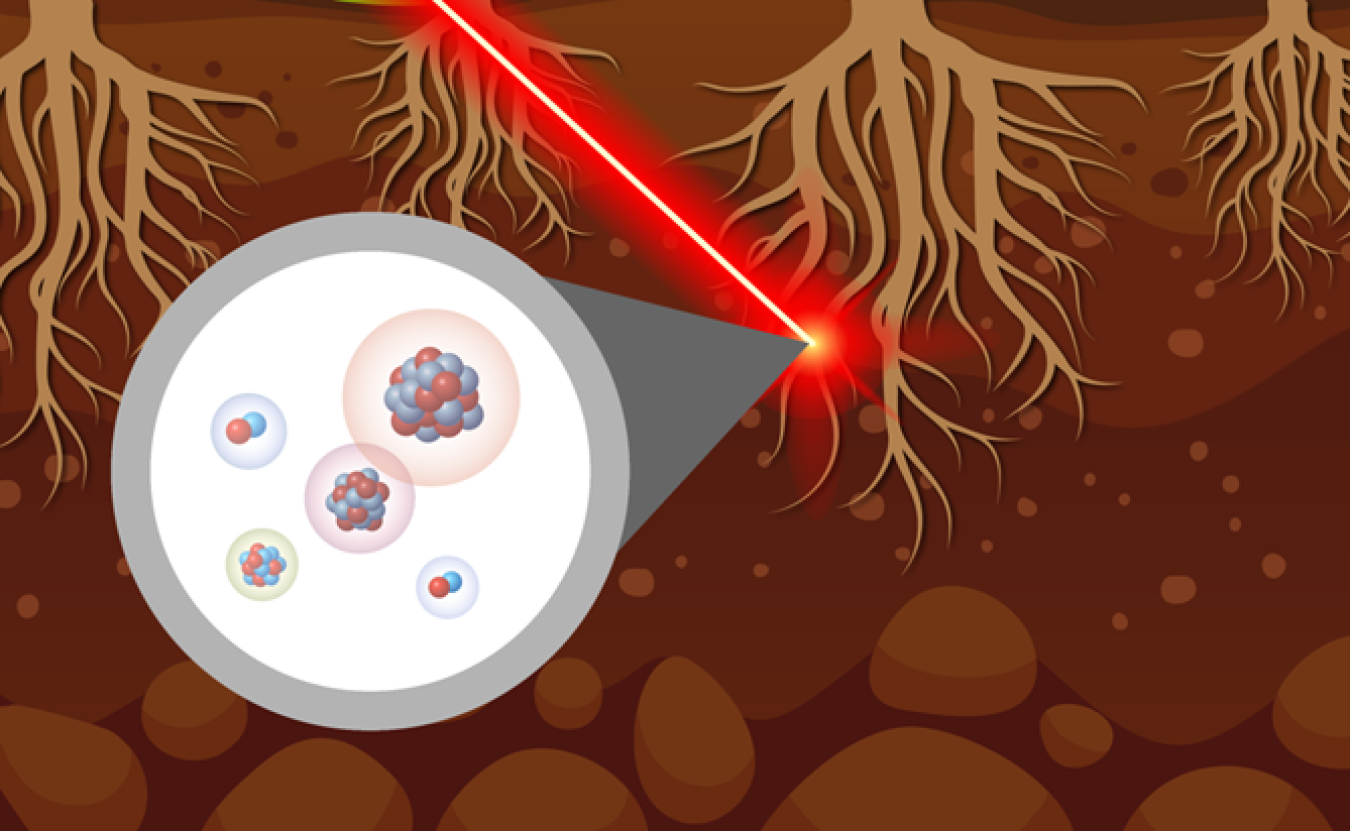A novel laser-based method provides unprecedented detail on the nutrient cycle in root ecosystems.
Biological and Environmental Research
July 28, 2025The Science
Organic carbon in soil helps plants grow and improves the diversity of the subsurface plant microbiome. However, most research on the injection of organic carbon into soil through various root processes focuses on small areas. This can make it more difficult to quantify the carbon and correlate it with the various microenvironments that exist around plant roots. Now, a multi-institutional team’s novel approach permits tracking of plant-derived organic carbon through plant tissues and into soil to enable detailed mapping of organic carbon. Understanding the processes controlling organic carbon input into soils is essential to understanding plant-microbe interactions important for the development of optimized non-food crops (such as switchgrass) as alternative supply chain resources for fuels, chemicals, and materials.
The Impact
This study demonstrated the ability to map the products of photosynthesis (such as sugars) that had recently been introduced into soil. Once in the soil, these products can fuel a range of microbial activities. The study harnessed stable isotope tracers in combination with a new analytical method. The approach works by using laser ablation to target specific sections of the sample for harvest. It then continuously analyzes the carbon-13 content of ablated particulates from the plant tissue, the area around the plant roots, and soil samples. This is a significant advance from previous approaches that required that samples be analyzed one at a time. The result is a method that produces orders of magnitude more data per time of analysis, enabling much better mapping of carbon in the sample.
Summary
A multi-institutional team of researchers developed and demonstrated a new approach to characterize carbon isotopic distribution in plant tissues, the rhizosphere, and soil. They began by exposing switchgrass plants to 13-CO2 in a laboratory setting. They leveraged a 13C tracer to selectively track photosynthetic materials as they were transferred through the plants’ vascular tissues and exuded into the rhizosphere. Then, using laser ablation at the Environmental Molecular Sciences Laboratory, a Department of Energy Office of Science user facility, the researchers rastered over the material and continuously ablated the sample, then combusted the resulting material. Next, they pumped this sample-derived CO2 through a capillary absorption spectroscopy (CAS) fiber. Carefully balancing the vacuum strength helped the team optimize sample dwell time in the fiber to achieve suitable measurement precision before the sample exited the fiber.
The improved sampling density in the team’s approach was made possible by employing the CAS isotope detector. The enhanced measurement sensitivity of CAS over conventional isotope ratio mass spectrometry was crucial to being able to run continuous analyses without needing to cryogenically trap the sample-derived CO2. This approach avoids a significant time lag and thereby increases the richness of the stable isotope data to better address carbon cycling questions in plant tissues, the rhizosphere, and soil.
Contact
Paul Bayer
U.S. Department of Energy
Paul.Bayer@science.doe.gov
Jim Moran
Michigan State University and Pacific Northwest National Laboratory
Moranja7@msu.edu or James.moran@pnnl.gov
Daniel Cleary
Pacific Northwest National Laboratory
dcleary@pusan.ac.kr
Tim Linley
Pacific Northwest National Laboratory
kasnykubay@outlook.com
Funding
Portions of this work were funded through the Department of Energy (DOE) Office of Science Office of Biological and Environmental Research program by the Small Business Technology Transfer program and a DOE Early Career Research Award. A portion of this research was performed at the Environmental Molecular Sciences Laboratory, a DOE Office of Science user facility sponsored by the Biological and Environmental Research program.
Publications
D.M. Cleary, et al., Laser ablation-capillary absorption spectroscopy: A novel approach for high throughput and increased spatial resolution measurements of δ13C in plant-soil systems. Soil Biology and Biochemistry 187, 109208 (2023). [DOI: 10.1016/j.soilbio.2023.109208]
Related Links
Environmental Molecular Sciences Laboratory news: New Approach Expands Spatial Resolved Quantification of Nutrient Exchange in Plant Tissues, the Rhizosphere, and Soils


